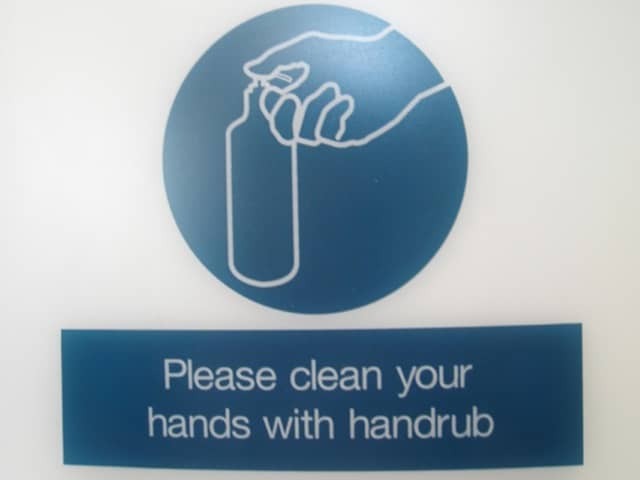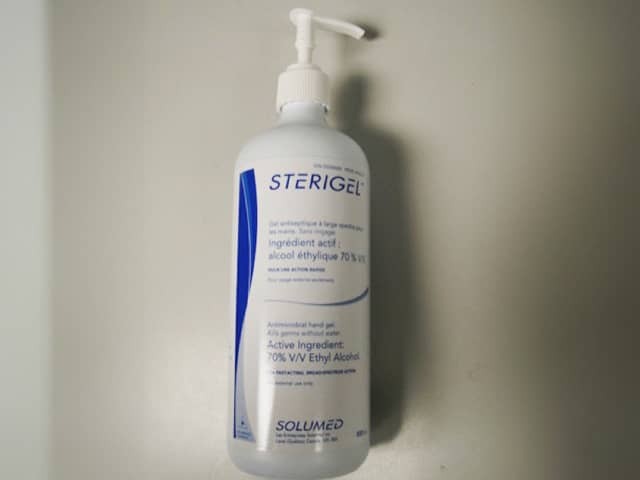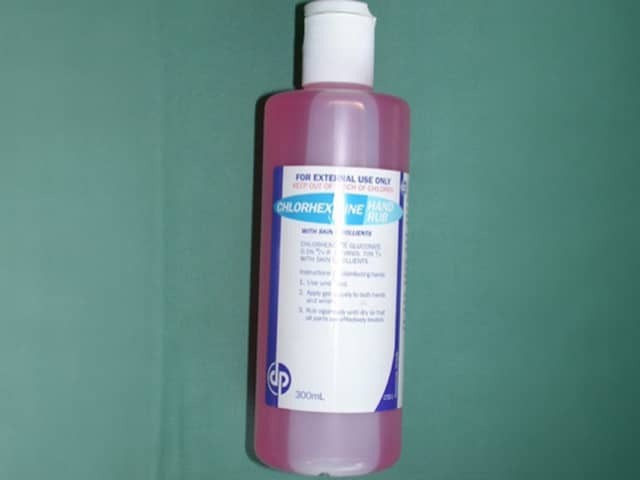Main menu
Common skin conditions

NEWS
Join DermNet PRO
Read more
Quick links
Hand rub Regular household soap Healthcare settings Hand rubs in the COVID-19 era Side effects When to use How to use
A hand rub is a gel or liquid containing antimicrobial agents that decrease the number of microorganisms present on hands. The antimicrobial agents in most hand rubs are alcohols (ethanol, isopropanol, and n-propanol), available in varying concentrations. Because hand rub does not remove organic material, it cannot be used if hands are visibly soiled. Hand rub is sometimes called a sanitiser.
Ethanol, at a concentration of 60% or greater, is effective against:
Alcohol-based hand rubs have limited effectiveness against bacterial spores (eg, Clostridium/Clostridioides difficile), protozoan oocysts, and certain viruses.
Alcohol-free superoxidised solutions and hand sanitiser products based on hydrogen peroxide can also be used for hand cleansing.

Hand rub

Hand rub

Hand rub
Social handwashing with non-antiseptic household soap removes bacteria and viruses by physical/mechanical means. Household soap acts as a detergent to help remove loosely adherent bacteria and viruses; microorganisms are not actually killed by these products. Downsides to washing hands using this method include:
Healthcare settings traditionally use chemical hand-wash products, such as chlorhexidine in addition to alcohol. These products have antimicrobial/antiseptic properties and are effective against many bacteria, fungi, and viruses.
Most studies comparing the effectiveness of hand rub against regular hand-washing have been performed in healthcare settings. These data show that hand rub is at least as effective as traditional hand-washing with chemical hand-wash products in reducing bacterial counts on skin and in reducing hospital-acquired infections. Furthermore, hand rubs are less irritating to the skin than traditional chemical hand-wash products.
Hand rubs have been particularly conspicuous during the SARS-CoV-2 pandemic to reduce transmission of the virus via the hands. Pump-packs and sprays of alcohol-based hand rubs are seen in all locations where there may be social contact including shops, restaurants, and doctor's surgeries. Alcohol dissolves the virus envelope and denatures viral proteins. Rubs must contain at least 80% ethanol or 75% isopropyl alcohol to be effective, and 3mL of liquid/foam/gel should be rubbed carefully all over the hands and fingers with a drying time of 45-50 seconds.
Ideally alcohol-based hand rubs should also contain low-allergenic emollients to minimise irritant contact dermatitis. The WHO recommended formulations consist of either 80% ethanol or 75% isopropyl alcohol with glycerol 1.45%, and hydrogen peroxide 0.125% in sterile water. Alcohol-based hand rubs should not include dyes, fragrances, preservatives, or allergenic surfactants due to the risk of allergic contact dermatitis.
Dry hands are common after frequent use of alcohol-based hand rubs, and carrying a small pocket-sized moisturiser in a tube for use during the day may minimise this.
Benzalkonium chloride is less effective against coronaviruses than alcohol in hand rubs.
It is uncommon to experience side effects from using hand rub. Evidence shows that hand rub is less damaging to the skin than soap and water. However potential skin reactions from hand rubs include:
These reactions are more likely in those with existing dermatitis or sensitive skin.